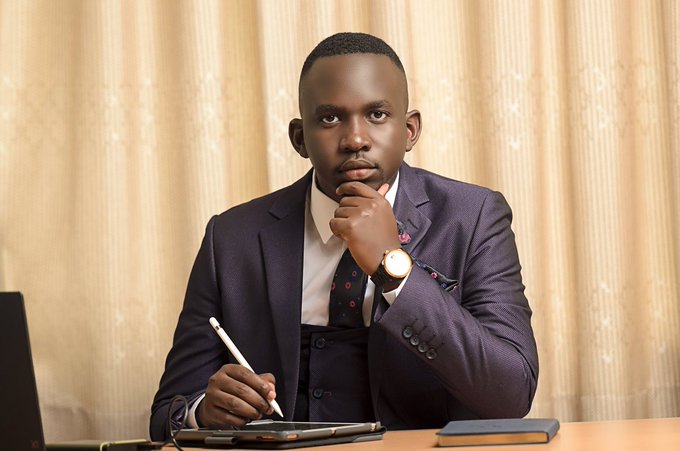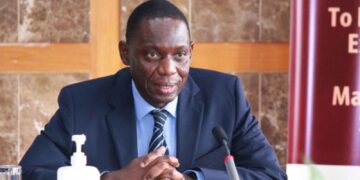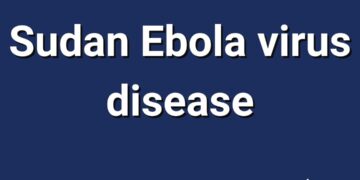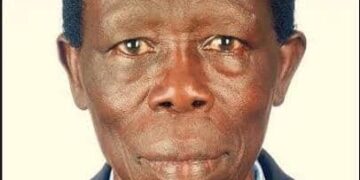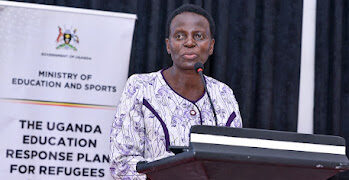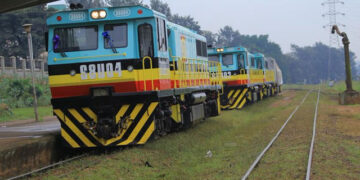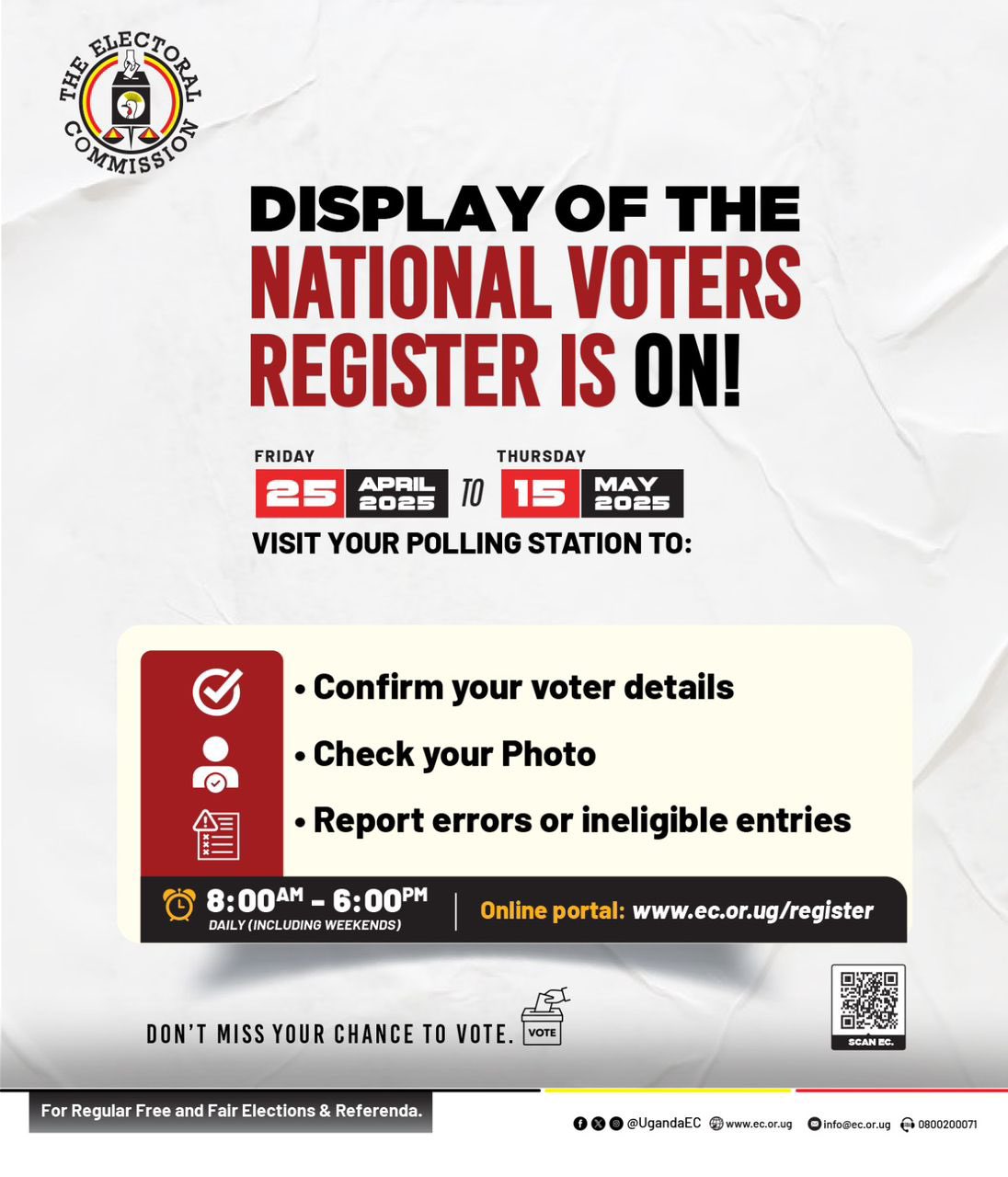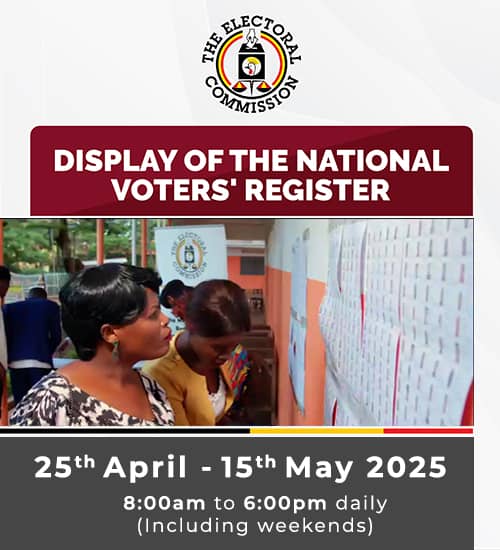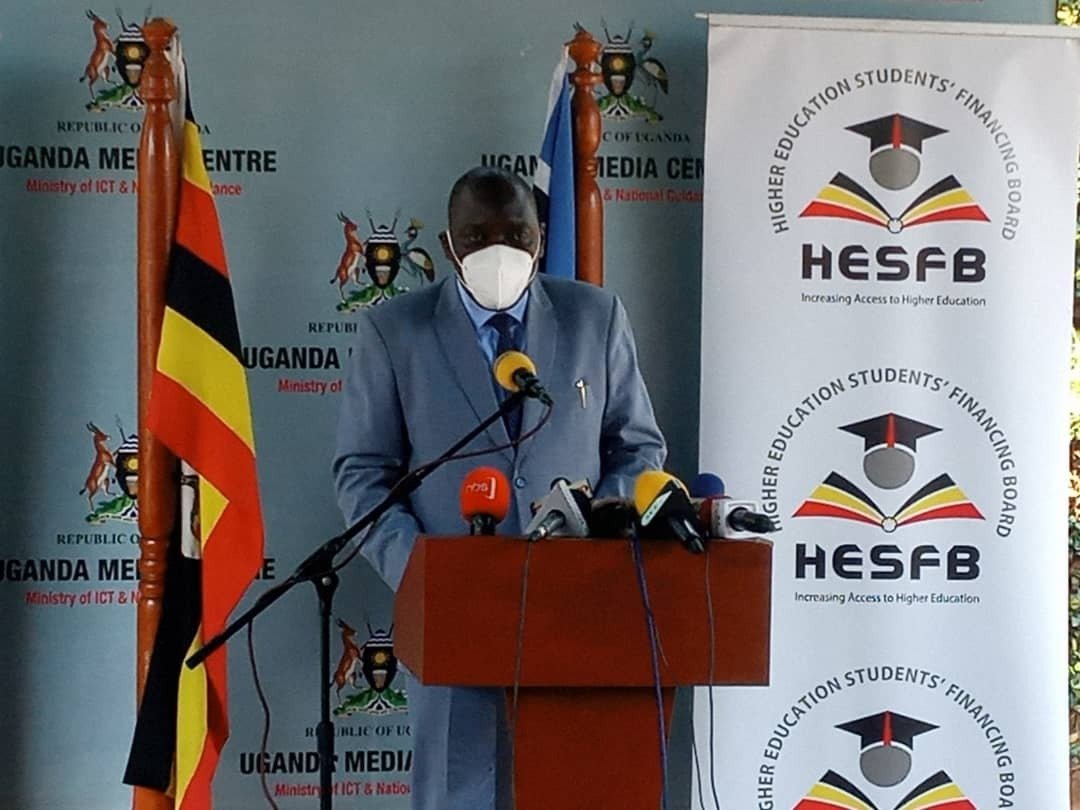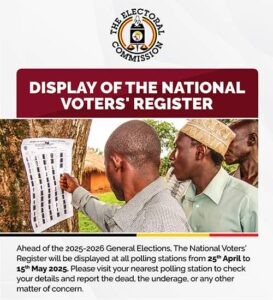By Simon Ssenyonga
“Dear Countrymen and Women, over the past few weeks, Uganda has seen a more aggressive and sustained growth of the COVID-19 pandemic as opposed to the earlier months of April and May 2021. Over the past 3 weeks, the daily number of people testing positive for Corona has increased from less than 100 to now over 1,700. This represents a 17 fold increase in daily cases. As a result our epidemic curve is now on steep rise with increased reports of deaths nationwide.”
These were the words that preceded the second season of the total lockdown in Uganda. The subsequent declarations after this salutation sealed the fate of many Ugandans with very stringent measures that included the banning of public transport, pulling back of curfew from 9pm to 7pm, closure of arcades, among various measures.
Based on the national COVID-19 epidemic curve of March 2020 to June 17th 2021, the scientists advised that there had to be a major shift in the response lest the pandemic intensity double in one month. The Ugandan model of containment has partly been reflected in the resurgence plan that was launched by the minister of Health, Hon. Jane Ruth Aceng on on 4th June 2021. The main objective of the resurgence plan is to mitigate transmission and minimize the public health and socioeconomic impact of a prolonged Covid-19 response. The resurgence plan is organized around two threshold; control alert and action. More than 1.3 trillion UGX is to be spent on realizing this plan in the next 6 months.
In her words, Dr Aceng noted that the alert threshold is reached when there is an increase of 10 per cent in the number of cases, while the action threshold begins when a 20 per cent increase is observed from baseline in geographical location. “Some of the activities under resurgence plan include enhanced surveillance, active case search, and procurement of test kits, personal protective equipment, critical care support, strengthening community engagement and risk communication, and supporting vaccination team’s countrywide for period of six months.” She noted.
In his address, the President noted that urgent intervention was required to reverse the escalating numbers lest the bed capacity of Ugandan hospitals be overstretched. Strategic interventions to maintain a fine balance of the pandemic control were hinged on preventive health and urgent care for the severely ill. This was to be addressed in two ways ie; through urgent interruption of community transmission to cushion the health system, sustain the people’s economic lives and save lives using previously used containment measures (lockdown) and ramping up oxygen supply to all COVID-19 treatment health facilities and optimize the available care capacity.
The president’s statements create grave inconsistencies and contradictions to his “fisherman’s” statements when she previously chest-thumped at the launch of the resurgence plan. On health facilities, Dr Aceng said: “A lot of preparation was undertaken during the first wave and up to now, intensive care units (ICU) were worked on, human resources have been trained to work in the ICU facilities and they have been deployed.” On another day, we can interrogate these continuous emerging contradictions and inconsistencies from the NRMs historical perspective towards the health care system that they seek to dearly defend, preserve and grow.
But finally, the almost two-hour speech punctuated by loud sips of tea, Runyankore proverbs, hearty laughter among other hilarious sessions, had to come to a temporary real end. Thank God neither kiddawalime nor another speech to clarify on what H.E had said, sufficed.
CONCLUDE WE MUST, BUT IN WHICH WAY? : THE UGANDAN MODEL
“Finally, to all of you Countrymen and Women, these are urgent and temporary, but extra-ordinary measures which we as the nation must jointly and fully embrace to protect and preserve our lives, our ways of life, the way we live, and our future. It is only through these measures that we shall in a long run protect our economy, preserve our democracy and sustain the NRM revolution.” These words wrapped up the speech of the President.
To me, this conclusion is very representative of the intentions, aspirations and perspectives of the government’s stance in handling the pandemic.
The government; executive, legislature and judiciary has not spared any effort in spinning the narrative concerning COVID-19. Either deliberately or ignorantly, majority have propagated the narrative of fear, despondency, anxiety and confusion to justify the unwarranted, high-handed and unsustainable lockdowns.
In response to COVID-19, most countries in the world implemented lockdowns, restricting their population’s movements, work, education, gatherings, and general activities in attempt to “flatten the curve” of COVID-19 cases. The public health goal of lockdowns was to save the population from COVID-19 cases and deaths, and to prevent overwhelming health care systems with COVID-19 patients.
According to Ari. R. Joffe of the Division of Critical Care Medicine, Department of Pediatrics, Stollery Children’s Hospital, University of Alberta, Edmonton, AB, Canada and John Dossetor of the Health Ethics Center, University of Alberta, Edmonton, AB, Canada; “The initial modeling predictions induced fear and crowd-effects (i.e., groupthink). Over time, important information emerged relevant to the modeling, including the lower infection fatality rate (median 0.23%), clarification of high-risk groups (specifically, those 70 years of age and older), lower herd immunity thresholds (likely 20–40% population immunity), and the difficult exit strategies. In addition, information emerged on significant collateral damage due to the response to the pandemic, adversely affecting many millions of people with poverty, food insecurity, loneliness, unemployment, school closures, and interrupted healthcare. Raw numbers of COVID-19 cases and deaths were difficult to interpret, and may be tempered by information placing the number of COVID-19 deaths in proper context and perspective relative to background rates. Considering this information, a cost-benefit analysis of the response to COVID-19 finds that lockdowns are far more harmful to public health (at least 5–10 times so in terms of wellbeing years) than COVID-19 can be.”
This then must embolden us to critically think about the whole relevance of lockdowns and reject mere trade-offs of narratives that cause majority to swim deeper in the murky waters of ignorance. Maybe the Presidential “fishermen” could rescue us given that they have mastered the lake now.
MEDIA: THE COMPLIMENTING FORCE OF FEAR IN THE UGANDAN MODEL
The “fear factor” is being used reprehensibly by the government and mainstream media (think about the “unintended consequences” of that periodic joint media TV broadcast on COVID) to control and manipulate the conscience of many gullible Ugandans and unsuspecting members of the international community. (let’s ignore the fact that majority of these are their ponies). Why do the government and media not report the number of recoveries both here in Uganda and worldwide?
Fear is being driven by the reporting in the media of children and now the youth dying of COVID-19. Some media reports are misleading since some of those that have sadly succumbed had serious preconditions like pneumonia, leukemia etc undiagnosed and some deaths are being misrepresented.
It is very likely that the many deaths presently being reported as ‘deaths from Covid-19’ would more correctly or more reasonably be described as deaths associated with COVID-19. There is a subtle distinction here; one that is frequently lost in popular media. The lack or inappropriate reference of such a distinction can only serve to add to what might be described by Dr.Marcus De Brun of the Medical Council of Ireland as a ‘pandemic of panic’.
VACCINATION: A LYNCHPIN TO HOLD IT ALL TOGETHER?
In his address, the President notes that ultimate solution to the COVID-19 challenge is vaccination. There is a global call for massive vaccination but there are serious concerns about these calls. Could some of the global manufacturers of these vaccines be looking for indemnity? In case of any adverse reactions which could include death or even lifelong health conditions can any of them be sued?
In a context of geopolitical competition surrounding vaccine procurement, Africa has been unable to secure sufficient doses of COVID-19 vaccines. The challenges are even greater for highly fragile and conflict-affected countries, where poor health infrastructure, limited access, security challenges and misinformation will make vaccination an arduous task. There is a real risk that the most vulnerable communities in Africa will be left behind. Without sufficient access to vaccines, the prolonged social, economic, health and political impacts of the pandemic are likely to exacerbate existing problems for the most fragile and conflict-affected regions.
Whereas vaccination is an important exercise, I hope its neither made mandatory or even a condition to return to normal life in any aspect.
According to a research by the Initiative for Economic, Social and Economic rights (ISER) produced in June 2021, “Government is yet to secure sufficient vaccines for all Ugandans or at least ensure those that have received a first dose will receive a second dose. Uganda received 964,000 vaccines on March 5th from COVAX and bilateral donations. Besides, the 864,000 AstraZeneca doses we received from COVAX and the 100,000 doses donated by India, we are not sure whether Ugandans will be able to get sufficient doses. In multiple statements, Government indicated it directly purchased 18 million doses of the AstraZeneca vaccines with 400,000 doses to be received by Mid-March and the rest in phases throughout the year. On 11th February, Parliament passed a supplementary budget of Shs 18.5 billion/5 million USD as a commitment fee/down-payment so the country could receive the vaccines. We have not seen those doses nor received a comprehensive explanation of why the initial 400,000 doses did not arrive as scheduled in March, whether the order was ever placed and whether the money was paid.”
Definitely there is no doubt that various credible investigations have demonstrated how our response model to COVID-19 was more of a money heist to enrich looters mainly as opposed to humanitarian needs.
In April 2021, the Initiative for Social and Economic Rights (ISER) filed an access to information request per the Access to Information Act, 2005 with the Ministry Health on the Serum Institute order but it was unanswered.
“At the start of May, the Serum Institute which supplies AstraZeneca/Covidshield to COVAX and most of the developing world including Uganda which stated it had placed an order, indicated it will not supply vaccines until at least December 2021 as it deals with the COVID-19 crisis in India. This should not have affected the March doses if indeed Uganda placed its order as it stated, but Serum Institute’s decision undoubtedly affects other doses including the planned doses from the second COVAX disbursement. The FY 2021-2022 Budget speech indicated government would set aside 560 billion UGX to procure additional vaccines to meet a target of 6 million Ugandans but other than that, no detail is provided particularly about the vaccine type that will be procured, which company will supply, at what cost per dose and when we can expect them.” the ISER research further enunciated.
Definitely, this causes serious questions of accountability on regards to procurement, preparation in negotiation of bilateral agreements -say with countries with extra vaccines; haphazard approaches towards government efforts and definitely amplifies misplaced priorities in organization, planning, monitoring, evaluation and implementation.
From this assessment, the economists can digress into the actual figures of monies lost in processes, execution and follow-ups, and match them up against our national economic priorities.
SEASON ’21 LOCKDOWN: A BUNKER UNREASONABLE THAT MUST BE OVERTURNED
Speed and intensity in community transmission were the key necessities to justify the 2021 lockdown in Uganda by the President.
Could our current expert advice either have failed to consider or overlooked the relevant demographic data and potential opportunities for a more tailored and effective effort at containment as opposed to an unsustainable blanket lockdown?
Whilst the differences in mortality across jurisdictions, are great, there are significant demographic, cultural and social factors that readily explain some (if not most) of the difference in mortality.
To date, a major difficulty with Covid-19 has been the enormous variability in morbidity/mortality data, the variability between countries, and the variability in individual outcomes. That’s exactly why as a nation we just cannot use unsustainable methods adapted from other nations to address our unique challenges. For example; what are the clear statistics that inform total lockdown based on both Community transmission and close contact transmission percentages?
The success or failure of social-distancing, isolation measures, economic shut down etc are all contingent upon a thorough understanding of the factors influencing the mode of spread. Human populations, medics and governments are presently acting upon the basis of a ‘droplet-spread’, as though specific distances and types of isolation are all based upon conclusive research and data, this is certainly not the case.
According to some scientists, the stated correlation between mortality rates and population densities does suggest that in the event of aerosol spread those nations with a lower population density would be expected to have a lower mortality rate, and this does indeed appear to be the case. The Center for Disease control and Prevention-CDC, has adopted ‘aerosol spread’ precautions, which is somewhat in contradiction with the WHO’s assertion that infection is ‘contact and droplet spread’. In either case the distinction between a ‘droplet’ and an ‘aerosol’ is not entirely clear. The size of a droplet that might contain transmissible virus, and the distance such a droplet might travel (whilst remaining pathogenic), has not been established with any significant degree of certainty. Its these major contradictions from key voices that inform Ugandan expert research that raises fundamental disagreements that cannot be ignored.
No lock-down can function at the level where continued community spread can be entirely prevented. This is not to say that a lock down is pointless, it is merely to assert that its aspirations can only be imperfect at best.As such,its not path that can be considered for a vulnerable economy like that of Uganda.
Definitely given the desperacy and despondency created by our model, the likelihood of death because of COVID is is lesser than that of the adverse effects of containment and governmental strategies in combating it. It is not unreasonable to assert that adults have higher levels of clinically significant anxiety and depression than children. It is a well-established general fact, that anxious and depressed individuals suffer more illness than others.
However, what is being highlighted here is the coincidence of two facts that are broadly accepted within the scientific and medical community; the first that anxiety/depression have an overall significant negative effect upon the immune-response. Secondly, that the incidence of significant clinical anxiety and depression is much lower in children than adults. Clearly the current management strategy within this jurisdiction (and elsewhere) remains almost entirely ignorant of the relationship between socially induced anxiety and pathology.
This is a total contradiction to the very justifications about preserving our livelihoods as a nation in this period.
LA VOIE A SUIVRE – THE WAY FOWARD.
Significant questions need to be asked in respect of the Government’s response to date, in particular, the gross overestimation of the national case burden, and subsequent actions and directives in light of these overestimations. The presence or influence of political bias must be considered and reviewed.
The poor consideration of the vulnerable, especially, needs to be accounted for at the highest possible level. The constituent level and type of expertise presently advising the Government must equally be questioned. Social anxiety and its consequences must be addressed. There can be little doubt that many mistakes have been made to date. Given the cost of the crisis and the cost of the response, the most crucially lacking ingredient in respect of this crisis, may not in fact be guidelines, ‘experts’, ICU beds and resources etc. but rather a fundamental lack of questions.
WHAT THEN WILL YOUR QUESTION BE?
Simon Ssenyonga is a lawyer.
